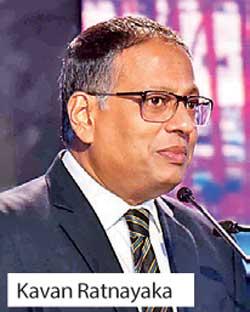02 Sep 2019 - {{hitsCtrl.values.hits}}
 By Nishel Fernando
By Nishel Fernando
The much anticipated deep water East Container Terminal (ECT) will come into operation in December next year, under the proposed terminal operating company (TOC) that will be jointly formed by Sri Lanka Ports Authority (SLPA), Japan and India, in which SLPA would have 51 percent stake.
“The Cabinet-appointed negotiating committee (CANC) will procure cranes and other equipment for the ECT, and we plan to have these cranes in place by December 2020 to commence operations,” Ports & Shipping and Southern Development Minister Sagala Ratnayaka told Mirror Business on the sidelines of the second Port of Colombo Awards Night held in Colombo last Friday. The Cabinet of Ministers in July approved a proposal to purchase six ship-to-shore gantry cranes and 18 electric-powered rubber-tired gantry cranes for the ECT.
While noting that Japan has offered a US$ 700 million concessionary loan facility through Japan International Cooperation Agency (JICA), Ratnayaka said SLPA would only obtain US$ 190 million initially to fund the procurement of cranes and other development activities of ECT before handing it over to the TOC.
“We are currently discussing to make them accept our loan note with provisions to provide the guarantee in 2020. The drawdown will also come in 2020 when the equipment is procured,” he said.
SLPA plans to spend its own funds to procure cranes with the expectation of getting it reimbursed later on by utilising the loan facility.
Japan has come forward to provide a concessionary loan at 0.1 percent interest with a 10-year grace period and 40-year tenure through JICA.
Meanwhile, Sri Lanka, Japan and India have formed a joint working group (JWG) to discuss the details of the proposed TOC, which is to be created between SLPA and nominated partners from Japan and India.
“It will be a running business when we hand it over to TOC for management. Therefore, we will value it accordingly. The JWG is currently working on it and thereafter we will hand it over to CANC for finalization. Finally, the Cabinet will have to approve equity and conditions of equity,” Ratnayaka elaborated.
The government plans to sign the agreement for the proposed TOC before the election cycle, in order to meet the set targets.
SLPA has already invested US$ 100 million in phase one of ECT.
Sri Lanka, India and Japan in the mid part of this year signed a memorandum of cooperation (MoC) for the development of the ECT.
According to the MOC, SLPA would retain 100 percent ownership of the ECT and would also hold 51 percent stake in the proposed TOC between SLPA and nominated partners from Japan and India.
Further, Ratnayake noted that the concessionary loan facility and the proposed TOC are independent from one another.
According to SLPA, the phase one of the ECT would have a handling capacity of two million TEUs, while phase two would have a capacity of three
million TEUs.
SLPA estimates that ECT second phase would need US $ 400 million investment.
Once the ECT is in full operation, it would have a handling capacity of over six million TEUs, employing 1,000 persons.
Colombo Port’s container throughput to grow 5%
 In the backdrop of a global slowdown in container shipping, the Port of Colombo expects 5 percent growth in container throughput this year to 7.4 million TEUs after crossing 7 million TEUs for first time last year, the Sri Lanka Port Authority (SLPA) Chairman Kavan Ratnayaka told Mirror Business.
In the backdrop of a global slowdown in container shipping, the Port of Colombo expects 5 percent growth in container throughput this year to 7.4 million TEUs after crossing 7 million TEUs for first time last year, the Sri Lanka Port Authority (SLPA) Chairman Kavan Ratnayaka told Mirror Business.
Ports & Shipping and Southern Development Minister Sagala Ratnayaka pointed out that Colombo port has outperformed a number of ports in the region and across the world despite the global slowdown recording 5.2 percent year-on-year growth in container throughput during the first half of the year.
“For an instance, during the same period, the Port of Shanghai recorded a growth of 5 percent, the Port of Singapore a mere 0.1 percent, Shenzhen 2.8 percent and Bussan 2.1 percent.
“Port of Hong Kong plummeted by 8.1 percent and transhipments hubs of Jebel Ali and Salalah also recorded declines at a rate of 9 and 12 percent,” he said.
Alphaliner recently reduced its global container throughput growth estimate for 2019 from 3.6 percent to 2.5 percent due to weakening volumes in the
first quarter.
25 Nov 2024 34 minute ago
25 Nov 2024 46 minute ago
25 Nov 2024 48 minute ago
25 Nov 2024 49 minute ago
25 Nov 2024 57 minute ago